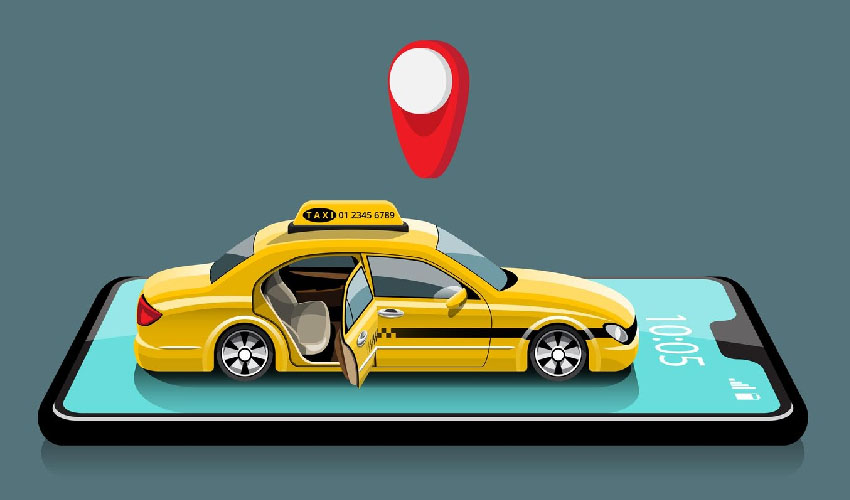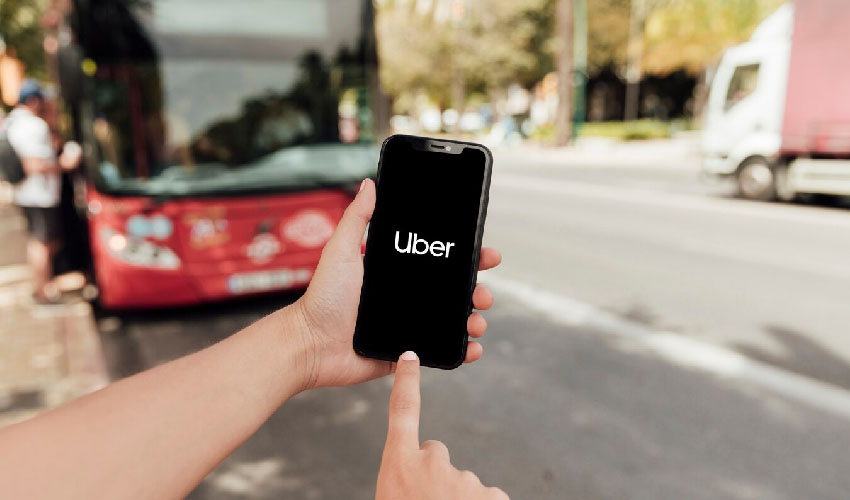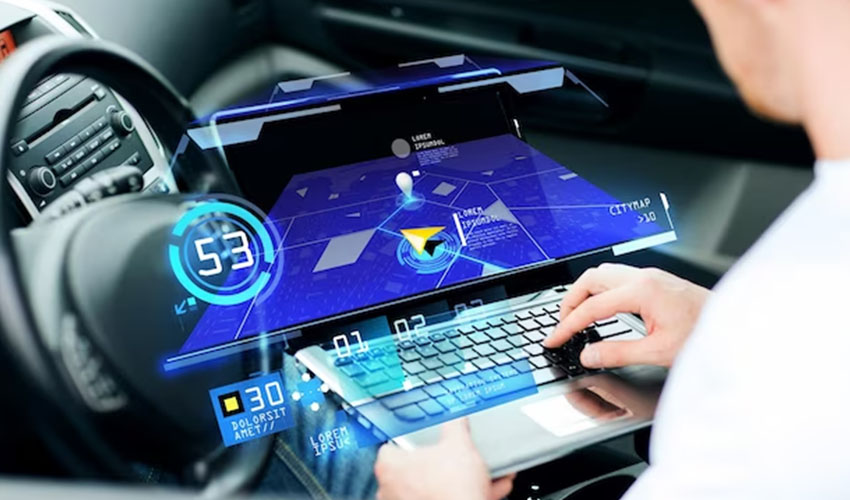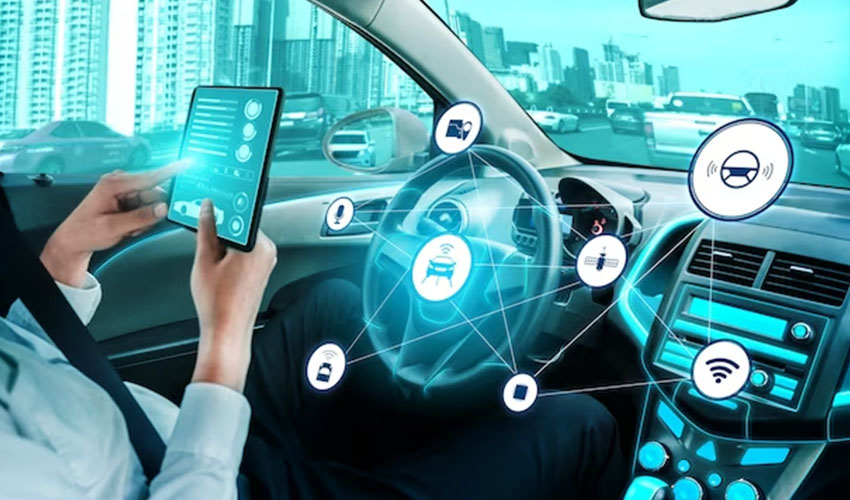Table of Contents
Introduction to Uber Clone Development
In the dynamic landscape of the modern digital age, where convenience and efficiency are paramount, Uber has emerged as a trailblazer in the realm of on-demand services. The success story of Uber has sparked a wave of inspiration among entrepreneurs, leading to the rise of a captivating trend – Uber clone development. This comprehensive introduction aims to unravel the intricacies of Uber clone development, exploring the multifaceted aspects, the underlying technology, and the potential it holds for businesses aiming to carve their niche in the competitive world of on-demand services.
The Genesis of Uber Clone Development
The concept of Uber clone development is rooted in the remarkable success of Uber, the pioneering ride-hailing service. Uber not only transformed the way people commute but also set a new standard for on-demand services. The concept of an Uber clone is essentially a replication of the Uber app, tailored to suit the specific needs and preferences of different businesses or niches. This allows entrepreneurs to harness the proven functionalities of Uber while injecting their unique identity and value propositions into the platform.
Key Features and Functionalities
1. Seamless User Experience: The cornerstone of any successful Uber clone lies in its user-friendly interface. A seamless and intuitive design ensures that users can effortlessly navigate through the app, from registration and ride booking to payment and feedback submission. The goal is to create an experience that is not only efficient but also enjoyable.
2. Real-time Tracking: The real-time tracking feature is integral to the Uber clone experience. Users and drivers alike benefit from accurate, up-to-the-minute location tracking, which not only enhances the overall experience but also contributes significantly to safety and security.
3. Secure Payment Gateways: In the era of digital transactions, secure and hassle-free payment options are paramount. Uber clones must integrate multiple payment gateways to cater to the diverse preferences of users, including credit/debit cards, digital wallets, and other online payment methods.
4. Rating and Review System: Building trust within the user community is crucial. Implementing a transparent rating and review system empowers users to provide feedback on their experiences, fostering accountability and transparency among drivers and users alike.
5. Admin Panel: The administrative backbone of the platform, the admin panel, plays a pivotal role in managing and overseeing the entire system. It provides administrators with comprehensive insights, enabling them to manage users, monitor activities, and swiftly resolve any issues that may arise.
6. Driver Management: Streamlining the onboarding process for drivers and providing tools for efficient management are vital components of Uber clone development. This includes features such as document verification, earnings tracking, and a comprehensive trip history for drivers.
7. Scalability: An Uber clone should be designed with scalability in mind. As the user base grows, the platform should seamlessly handle increased traffic and transactions. A scalable architecture ensures that the platform can evolve to accommodate the expanding needs of the business.
The Development Process
1. Market Research: Before initiating the development process, thorough market research is imperative. Identifying the target audience, analyzing competitors, and understanding the specific needs of the chosen niche lay the groundwork for a successful Uber clone.
2. Technology Stack: Choosing the right technology stack is a critical decision that influences the performance, security, and scalability of the Uber clone. Factors such as app responsiveness, data security, and the ability to scale up as the user base expands should guide the selection of technologies.
3. UI/UX Design: The importance of an appealing and user-friendly design cannot be overstated. The user interface (UI) and user experience (UX) design play a pivotal role in attracting and retaining users. A visually pleasing and intuitive design enhances the overall user experience, contributing to the success of the Uber clone.
4. Development and Testing: Collaborating with experienced developers is key to bringing the Uber clone to life. Rigorous testing is conducted to identify and rectify any bugs or issues, ensuring a smooth and reliable user experience. The development phase is a critical juncture, demanding precision and attention to detail.
5. Launch and Marketing: A well-thought-out launch strategy is crucial for gaining traction in the market. Utilizing digital marketing channels, social media platforms, and strategic partnerships helps create awareness and attract users to the Uber clone platform. Effective marketing is essential to stand out in a competitive landscape.
Challenges and Considerations
While Uber clone development holds immense potential, it is not without its challenges and considerations. The competitive nature of the on-demand service sector demands careful planning and execution. Factors such as regulatory compliance, market saturation, and the need for constant innovation pose challenges that businesses must navigate to thrive in this space.
1. Regulatory Compliance: Adhering to local regulations and compliance standards is crucial for the success and sustainability of any Uber clone. Navigating the complex web of transportation and service industry regulations requires careful consideration and often collaboration with legal experts.
2. Market Saturation: The proliferation of on-demand services and Uber clones in various niches has led to market saturation in some regions. To stand out, businesses must identify unique value propositions and differentiators that set their Uber clone apart from the competition.
3. Continuous Innovation: The tech landscape is ever-evolving, and customer expectations are constantly changing. To stay relevant and competitive, businesses engaged in Uber clone development must embrace a culture of continuous innovation, integrating new features and technologies to enhance the user experience.
The Future of Uber Clone Development
As technology continues to advance and consumer behavior evolves, the future of Uber clone development appears promising. The potential applications extend beyond traditional ride-hailing services, encompassing various on-demand sectors such as food delivery, grocery delivery, and more. The versatility of the Uber clone model allows entrepreneurs to explore and capitalize on emerging trends, creating tailored solutions to meet the evolving needs of consumers.
Key Features of an Uber Clone App
In the ever-evolving landscape of the on-demand economy, the Uber model has become synonymous with convenience, reliability, and innovation. As businesses seek to emulate this success, the development of Uber clone apps has surged in popularity. This comprehensive exploration aims to delve deeper into the key features that define an Uber clone, shedding light on the intricacies that contribute to the success of these applications.
User-friendly Interface
At the heart of any successful Uber clone app lies a user-friendly interface that caters to the diverse needs of passengers and drivers alike. The design should be intuitive, allowing users to effortlessly navigate through the app’s functionalities. From the initial registration process to booking a ride and completing a payment transaction, every step should be seamless and user-centric.
Streamlined Registration and Onboarding: The first impression matters, and Uber clone apps prioritize a quick and hassle-free registration process. Users should be able to sign up with minimal information, using email, phone number, or social media accounts. A streamlined onboarding process extends to drivers as well, ensuring they can join the platform efficiently, with straightforward document verification procedures.
Real-time Tracking
The magic of real-time tracking lies in its ability to transform the user experience from ordinary to extraordinary. Both passengers and drivers can monitor each other’s locations in real time, providing a sense of security and transparency. The integration of GPS technology is fundamental, allowing users to track the approaching vehicle and drivers to navigate efficiently to the pick-up and drop-off locations.
Dynamic Map Integration: To achieve seamless real-time tracking, Uber clone apps often integrate dynamic maps. These maps not only display the current location of the user and driver but also offer real-time traffic updates, optimal routes, and estimated arrival times. This feature enhances the overall efficiency of the transportation service and contributes to customer satisfaction.
Payment Gateway Integration
A secure and convenient payment system is integral to the success of any Uber clone app. Multiple payment options should be integrated, allowing users to choose from credit/debit cards, digital wallets, or other online payment methods. The emphasis is on providing a hassle-free transaction experience, with encrypted payment gateways ensuring the security of financial data.
Cashless Transactions: One of the revolutionary aspects of the Uber model is its emphasis on cashless transactions. By eliminating the need for physical currency, Uber clone apps contribute to a safer and more convenient payment process. This not only benefits users but also simplifies accounting for drivers and the platform itself.
Rating and Review System
Building trust within the community is paramount in the on-demand service industry. The integration of a rating and review system allows users to provide feedback on their experience, fostering accountability and transparency. Drivers with consistently high ratings are rewarded, while those with lower ratings may undergo further scrutiny or training.
Two-way Rating System: In an Uber clone app, the rating system operates both ways – passengers rate drivers, and drivers rate passengers. This ensures a fair and balanced feedback loop, promoting responsible behavior on both ends. The system is a valuable tool for maintaining a high standard of service and helps users make informed decisions when choosing a ride.
Admin Panel
The admin panel serves as the nerve center of an Uber clone app, empowering administrators to oversee and manage the entire system. It provides comprehensive insights, enabling administrators to monitor user activities, address issues, and ensure the smooth functioning of the platform.
User Management: From verifying user credentials to handling account-related issues, the admin panel streamlines user management. Administrators can review and manage user profiles, ensuring that the platform maintains a secure and trustworthy user base.
Trip Monitoring and Analytics: The admin panel includes tools for monitoring ongoing trips and analyzing historical data. This functionality enables administrators to gain insights into user behavior, popular routes, peak hours, and other essential metrics. Such data-driven decision-making is crucial for optimizing the efficiency of the platform.
Driver Management
Efficient driver management is vital for the success of an Uber clone app. The features under this category go beyond onboarding and include tools for ongoing support and performance tracking.
Document Verification: Ensuring the authenticity and compliance of drivers is a critical aspect of driver management. The app should incorporate a robust document verification system to validate driver licenses, vehicle registrations, insurance documents, and other required certifications.
Earnings Tracking: To motivate drivers and ensure their satisfaction, an Uber clone app should include features that allow drivers to track their earnings. Transparency in earnings contributes to a positive driver experience and encourages drivers to provide high-quality service.
Trip History: Drivers can access their trip history, providing details about past rides, earnings, and user ratings. This feature not only facilitates record-keeping for drivers but also allows them to identify patterns in their work and improve their service accordingly.
Scalability: An Uber clone app must be designed with scalability in mind. As the user base grows, the platform should seamlessly handle increased traffic, transactions, and data without compromising performance.
Cloud Integration: Cloud integration is a key element of scalability. By leveraging cloud services, Uber clone apps can dynamically scale their resources based on demand. This ensures a consistent and reliable user experience even during periods of high activity.
Load Balancing: To distribute incoming traffic efficiently, load balancing mechanisms are implemented. This prevents any single component of the app from becoming a bottleneck, optimizing the overall performance of the platform.
Driver App Development in Uber Clone
In the ever-evolving landscape of on-demand services, the development of a driver app plays a pivotal role in the success of an Uber clone. This comprehensive guide delves into the nuances of driver app development, elucidating the key features, considerations, and the step-by-step process involved in creating a robust and user-friendly driver-centric application.
Understanding the Driver App in the Uber Clone Framework
The driver app is the lifeline of any ride-hailing platform, serving as the interface between drivers and passengers. Its primary goal is to streamline the driving experience, ensuring efficiency, safety, and seamless communication. Let’s dissect the crucial features that constitute an effective driver app within the Uber clone ecosystem:
1. User Onboarding and Verification
- The onboarding process should be swift and user-friendly, allowing drivers to register with minimal friction.
- Implement a robust verification system, validating driver credentials, licenses, and background checks to ensure passenger safety.
2. Real-Time Navigation
- Integration with GPS technology is imperative for real-time navigation. This feature aids drivers in efficiently reaching their destinations, optimizing routes, and minimizing travel time.
- Provide turn-by-turn navigation instructions to enhance the overall driving experience.
3. Trip Management
- Enable drivers to manage and accept trip requests seamlessly. Clear information about the passenger’s location, destination, and estimated fare should be readily available.
- Implement a dynamic queuing system to manage multiple ride requests efficiently.
4. Earnings and Incentives
- A transparent earnings dashboard keeps drivers informed about their income, providing insights into completed trips, bonuses, and incentives.
- Incorporate a dynamic pricing model that considers factors such as peak hours, demand, and distance traveled.
5. Communication Tools
- Facilitate effective communication between drivers and passengers through in-app messaging and calling features.
- Implement a notification system to keep drivers updated on trip requests, cancellations, and relevant information.
6. Rating and Feedback System
- A two-way rating and feedback system promotes accountability and quality service. Allow drivers to rate passengers, and vice versa, fostering a sense of trust within the community.
- Use feedback to address performance issues and continuously improve the overall experience.
7. Document Management
- Develop a secure system for drivers to upload and manage essential documents, such as licenses, insurance, and vehicle registration.
- Regularly verify and update documents to comply with legal and safety standards.
8. Driver Support
- Integrate a responsive customer support system to address driver queries, concerns, and technical issues promptly.
- Provide a comprehensive FAQ section within the app to address common inquiries.
The Driver App Development Process
Creating a driver app for your Uber clone involves a meticulous development process, ensuring that the application is robust, user-friendly, and capable of handling the demands of a dynamic ride-hailing environment. Here’s a step-by-step guide to the driver app development process:
1. Requirement Analysis
- Collaborate with stakeholders to define the specific requirements of the driver app.
- Identify the target audience, geographic locations, and unique features required for your Uber clone.
2. Technology Stack Selection
- Choose a technology stack that aligns with the scalability, security, and performance requirements of the driver app.
- Consider factors such as real-time data processing, GPS integration, and seamless communication.
3. UI/UX Design
- Design an intuitive and visually appealing interface for the driver app.
- Prioritize ease of use, with a focus on navigation, trip management, and clear communication features.
4. Frontend and Backend Development
- Develop the frontend of the app, ensuring a responsive design compatible with various devices and screen sizes.
- Simultaneously, build a robust backend system that handles user authentication, trip management, and communication.
5. GPS Integration
- Implement GPS technology to enable real-time location tracking and navigation.
- Optimize route algorithms to provide drivers with the most efficient paths to reach their destinations.
6. Security Measures
- Prioritize the security of driver and passenger data by implementing encryption and secure authentication protocols.
- Regularly conduct security audits to identify and address potential vulnerabilities.
7. Testing
- Conduct rigorous testing to identify and rectify any bugs, glitches, or performance issues.
- Perform usability testing with actual drivers to gather feedback on the user experience.
8. Deployment
- Deploy the driver app on relevant app stores, ensuring compliance with platform-specific guidelines.
- Monitor app performance and address any issues that may arise post-deployment.
Challenges and Solutions in Uber Clone App Development
In the ever-evolving landscape of on-demand services, the development of a driver app plays a pivotal role in the success of an Uber clone. This comprehensive guide delves into the nuances of driver app development, elucidating the key features, considerations, and the step-by-step process involved in creating a robust and user-friendly driver-centric application.
The driver app is the lifeline of any ride-hailing platform, serving as the interface between drivers and passengers. Its primary goal is to streamline the driving experience, ensuring efficiency, safety, and seamless communication. Let’s dissect the crucial features that constitute an effective driver app within the Uber clone ecosystem:
1. User Onboarding and Verification
- The onboarding process should be swift and user-friendly, allowing drivers to register with minimal friction.
- Implement a robust verification system, validating driver credentials, licenses, and background checks to ensure passenger safety.
2. Real-Time Navigation
- Integration with GPS technology is imperative for real-time navigation. This feature aids drivers in efficiently reaching their destinations, optimizing routes, and minimizing travel time.
- Provide turn-by-turn navigation instructions to enhance the overall driving experience.
3. Trip Management
- Enable drivers to manage and accept trip requests seamlessly. Clear information about the passenger’s location, destination, and estimated fare should be readily available.
- Implement a dynamic queuing system to manage multiple ride requests efficiently.
4. Earnings and Incentives
- A transparent earnings dashboard keeps drivers informed about their income, providing insights into completed trips, bonuses, and incentives.
- Incorporate a dynamic pricing model that considers factors such as peak hours, demand, and distance traveled.
5. Communication Tools
- Facilitate effective communication between drivers and passengers through in-app messaging and calling features.
- Implement a notification system to keep drivers updated on trip requests, cancellations, and relevant information.
6. Rating and Feedback System
- A two-way rating and feedback system promotes accountability and quality service. Allow drivers to rate passengers, and vice versa, fostering a sense of trust within the community.
- Use feedback to address performance issues and continuously improve the overall experience.
Conclusion
The development of a driver app within the Uber clone ecosystem is a multifaceted process that requires careful consideration of user needs, market dynamics, and technological advancements. By prioritizing features such as real-time navigation, earnings transparency, and effective communication tools, businesses can create a driver-centric application that enhances the overall ride-hailing experience.
The step-by-step development process outlined in this guide serves as a roadmap for entrepreneurs and developers venturing into the competitive realm of on-demand services. Continuous improvement, adaptability to market changes, and a commitment to user satisfaction are key factors that will contribute to the long-term success of the driver app within the Uber clone framework. As technology continues to evolve, embracing innovation and staying attuned to the needs of drivers and passengers alike will be essential for thriving in this dynamic and ever-expanding industry.
Thanks for reading our post “Uber Clone Development”. Please connect with us to learn more about Uber Clone.






















